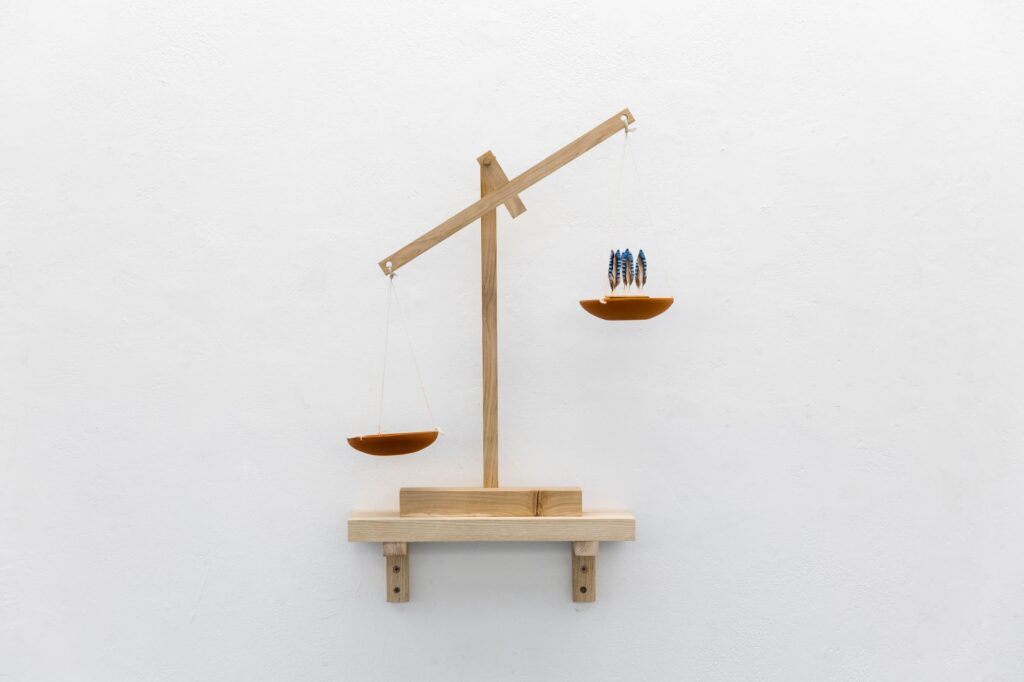
Railway sleepers from the River Tyne and jay feathers found in Northumberland can become art materials as potent as paint or pastel in the right hands.
This much is clear in the second exhibition curated by Jed Buttress at Newcastle Arts Centre as part of a project called Brass Tacks.
The first, in September, was called In The Round and as well as being a fascinating compilation of stories and working methods, it served as a reminder of the creativity in our midst.
The same can be said of the follow-up, Counterweight, which asked artists to respond to a theme of landscape, ritual and myth.
Brass Tacks, funded by North of Tyne Combined Authority and Newcastle City Council, lies at the heart of Creative Central: NCL, the city zone identified as ripe for a bit of artistic rejuvenation.
Newcastle Arts Centre has long been a creative hub, but these exhibitions invite us to consider what the area might become if more bright sparks moved in to unlock the potential of its many unused spaces.
Sean Alec Auld’s visually arresting sculptures require visitors to tread carefully around them.
They’re made of hefty stuff such as the railway sleepers, dark as the Black Middens at the mouth of the Tyne, a salvaged wooden stepladder and various rocks.
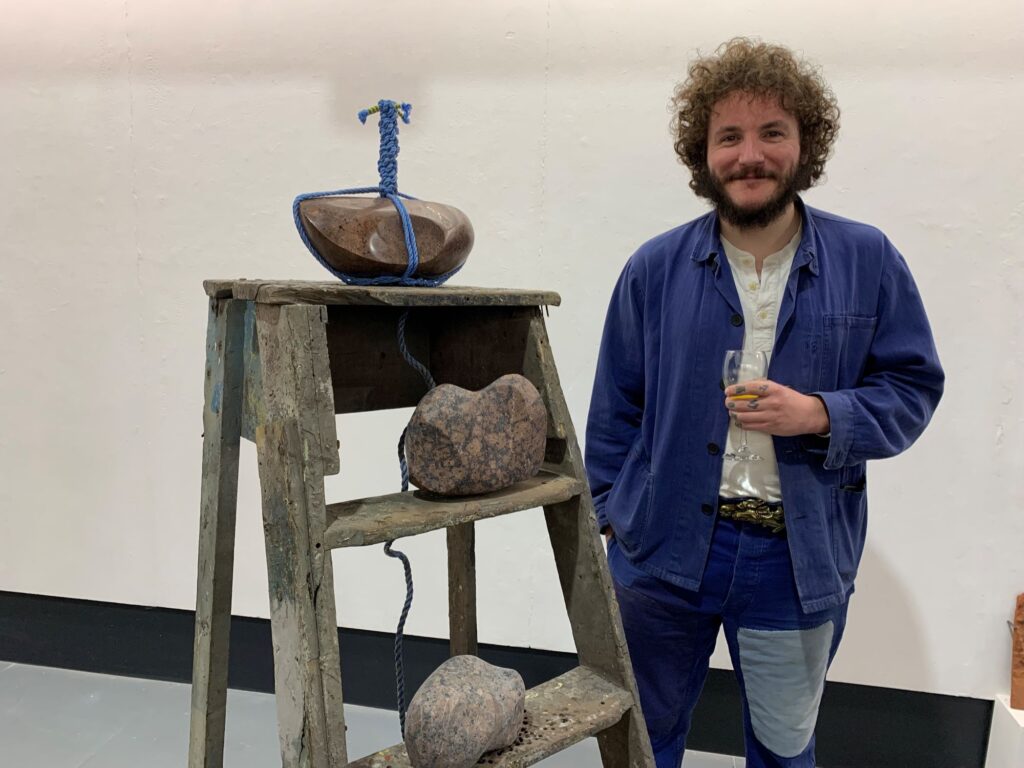
Northumberland-born but Byker-based, he declares himself ‘entirely self-trained… just a lifetime’s experience of working in the trades – construction, welding, oil and gas’.
He still does ‘bits and bobs’ but says he’s trying to transition into doing ‘more of this’.
While circumstances hadn’t allowed for college, he says his childhood creative spirit never went away.
“I’ve come to realise that I can apply the knowledge and skills I’ve gained over the years to creative work.”
The sleepers, acquired from an obliging Tyne dredging team, were dragged back to Albion Row Studios where Alec’s based with others in part of Byker’s former Domestos factory.
Burned black, they became the rugged base for polished chunks of larvikite rock on ‘legs’ of steel, to me resembling seabirds.
Alec doesn’t contradict, saying only: “I prefer to hear what other people think than say what I intended.”
The title, though, is from Norse mythology which he says has helped him through past difficulties.
It’s Ginnungagap, ‘part of the Norse creation myth, the cosmic void from which everything sprang’.
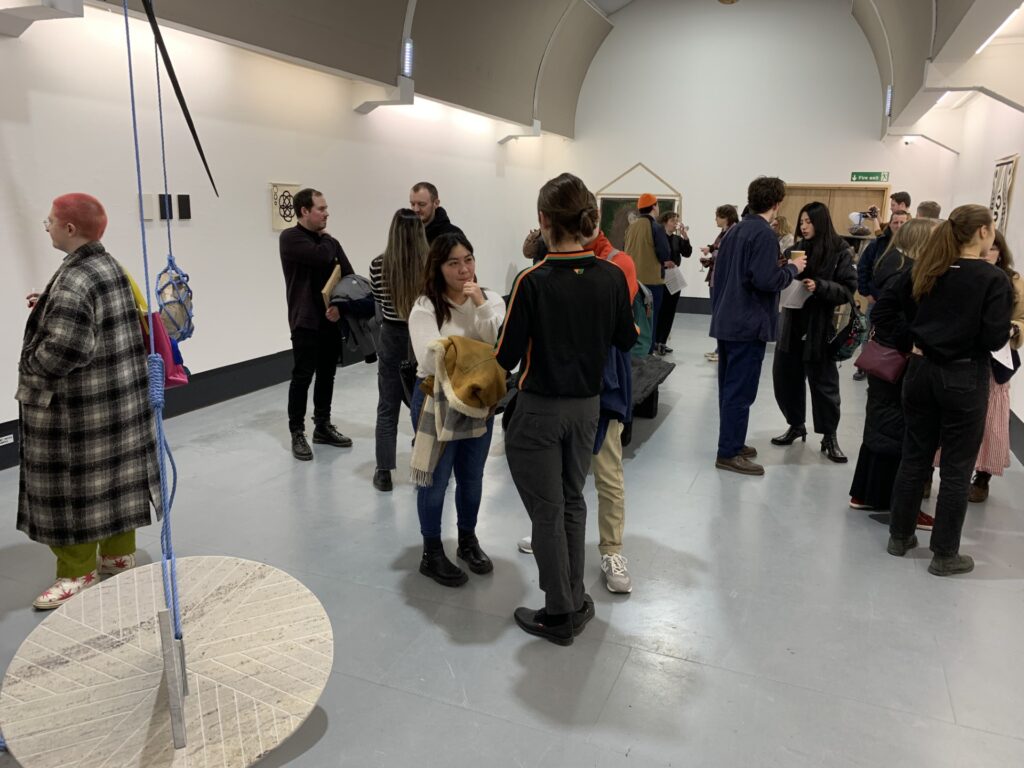
An even longer Norse title describes a neighbouring amalgam of granite offcuts from kitchen work tops, rope, burnt oak and ‘the noise of a cat’s footsteps, the beard of a woman, the roots of a mountain, the sinews of a bear, the breath of a fish and the spittle of a bird’.
Not to be taken literally, the latter ingredients allude to the myth referenced by the piece which involves a monstrous wolf, Fenrir.
The larvikite, from Norway’s Oslo Rift, is the genuine article. Alec says he found a load dumped as ballast on a Northumberland beach and spent hours polishing to get an impressive sheen.
Ask about the material cost of his sculptures and he’ll tell you: “The total cost is just my time and the work that’s gone in to making them what they are.”
Not an artist from an ivory tower, then, but one who has come to understand the worth of labour.
Laurie Powell, his fellow Counterweight exhibitor, also finds his materials although fields and hedgerows are his primary hunting grounds.
Two of his simple yet effective wall-mounted exhibits are called Rose and Bracken and each features carefully arranged sprigs within a frame fashioned from fallen cherry.
Born in Sheffield, Laurie was taken to live in Alnwick when he was 12 and loved exploring the area on foot.
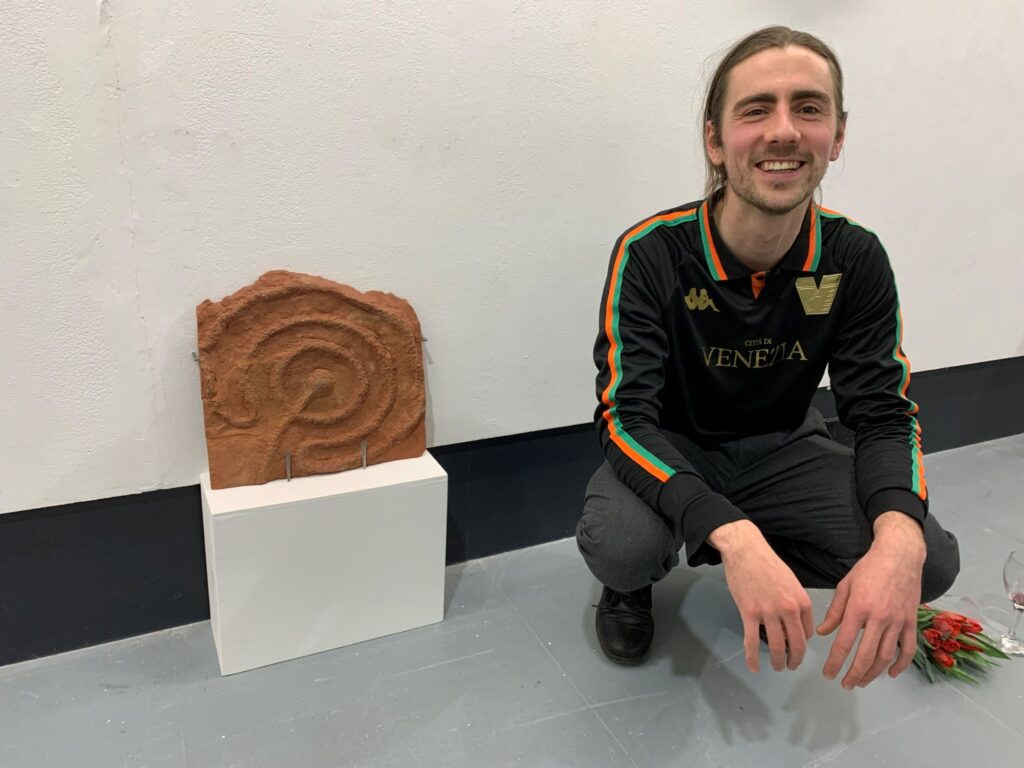
He says his mother, a gardener, helped to stimulate his curiosity about nature.
“You’re surrounded by so many usable materials and I get drawn towards them.”
He talks of a right moment to gather bracken suitable for his artistic needs and the occasional rare finds, such as the jay’s blue feathers in the piece called Work-life Balance.
Another exhibit, The Transmission of Fire, mimics the ancient cup and ring rock carvings found in parts of Northumberland and was made with clay dug from one such location.
Laurie studied fine art at Leeds University but afterwards returned to Northumberland because that’s where inspiration lay.
For a time he worked in an Alnwick butcher’s where he found a use for the small quantities of unwanted venison hide, turning it into the gluey artistic primer called gesso.
Now, when not making his own art, he works as an assistant at Antony Gormley’s Hexham studio.
Mani Kambo has exhibited in group shows around the North East, most recently at Newcastle Contemporary Art (formerly Baltic 39) on High Bridge and in the Hinterlands exhibition at Gateshead’s Baltic.
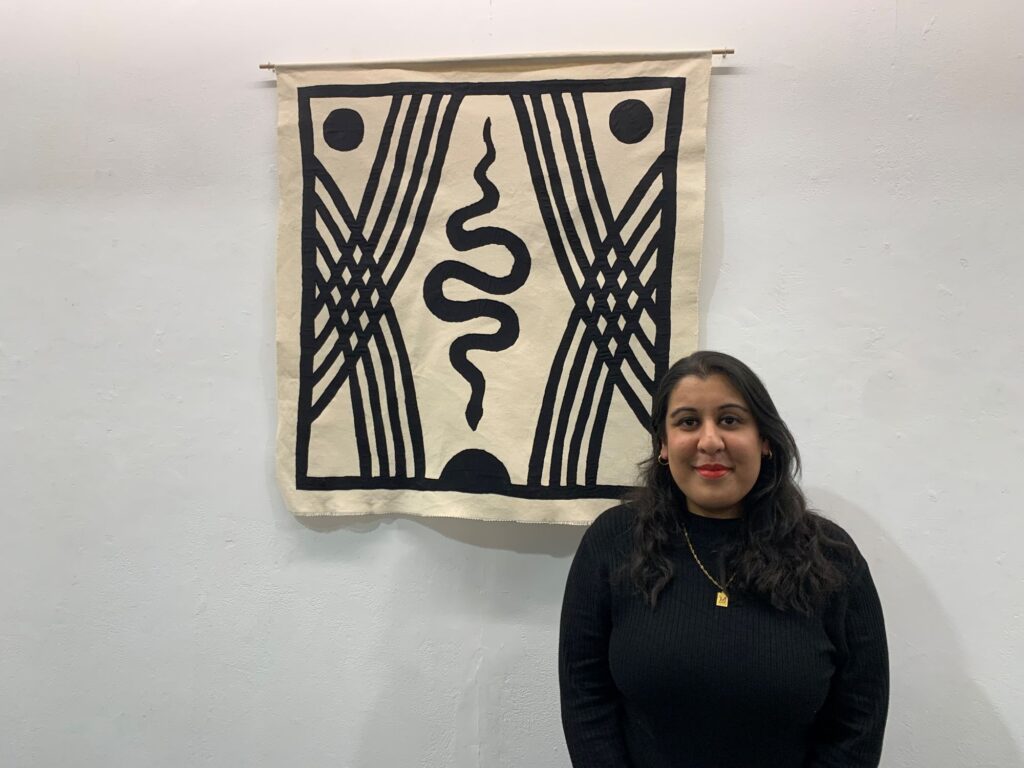
She studied at Newcastle College and Northumbria University where she became interested in film.
More recently, though, she has become known for textile hangings and wall-mounted works with striking symbols, white on black or, as here, black on white.
She isn’t religious, she says, and doesn’t practise, but her Sikh upbringing in the North East helped to instil an interest in symbols and motifs.
“There are certain symbols I use a lot in my work, such as the circle and the dot, but they’re not specifically related to Sikhism or any religion.
“They’re things I’ve come to over time, such as the serpent or snake which is to do with the idea of the beginning and the end, and the dot which in South Asian culture is worn behind the ear as protection.
“The symbols in my work are there because I’ve been drawn to them.”
Hands also appear frequently in Mani’s creations which seem laden with meaning even if it’s not made explicit.
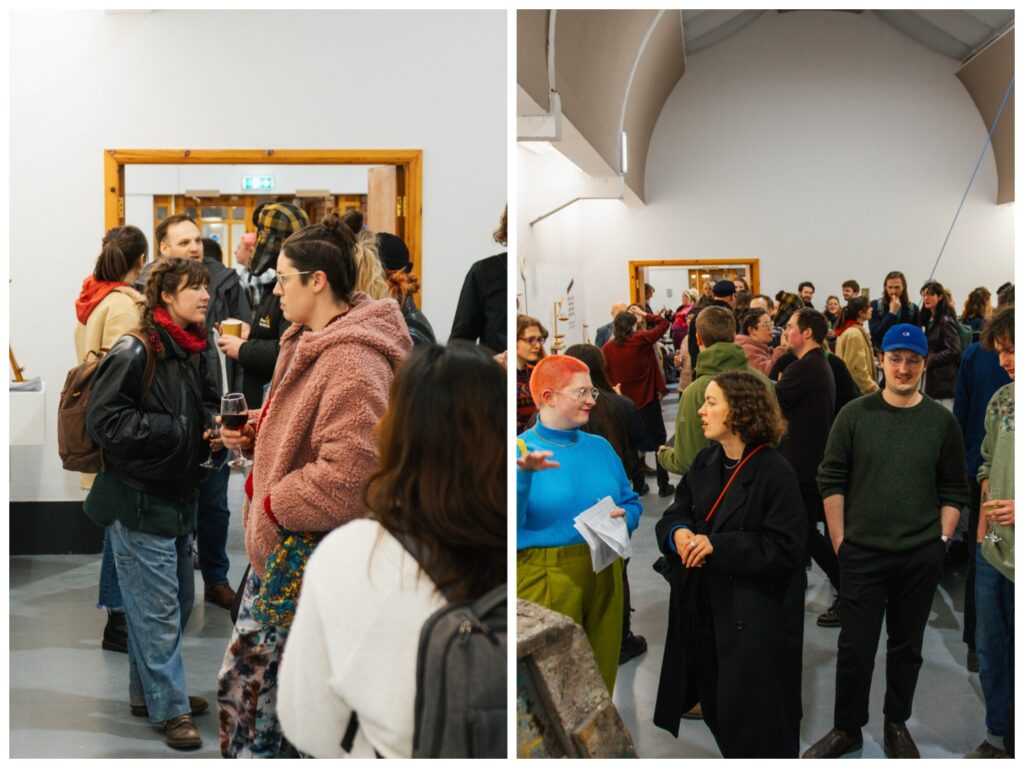
And while these new pieces might seem similar to those seen at Baltic, she says they were painted whereas these were stitched, black cotton onto pale canvas.
A departure are the rope hangings with knots, in entwined black and white to suggest balance and harmony. Not, she laughs, allegiance to a certain North East football team, as some have suggested.
Working from a home studio, Mani says she was happy to stay in the region after uni. “I think it’s a good place to be.”
Bethany Stead, who graduated from Newcastle University in 2019, agrees.
“I’m from Ferrybridge, near Wakefield, but I love it here. There’s a beautiful art scene and I’ve a studio at the NewBridge Project in Sandyford which is amazing.”
Like Mani, religion was the spur to developing a personalised mythology inspired by her education and upbringing.
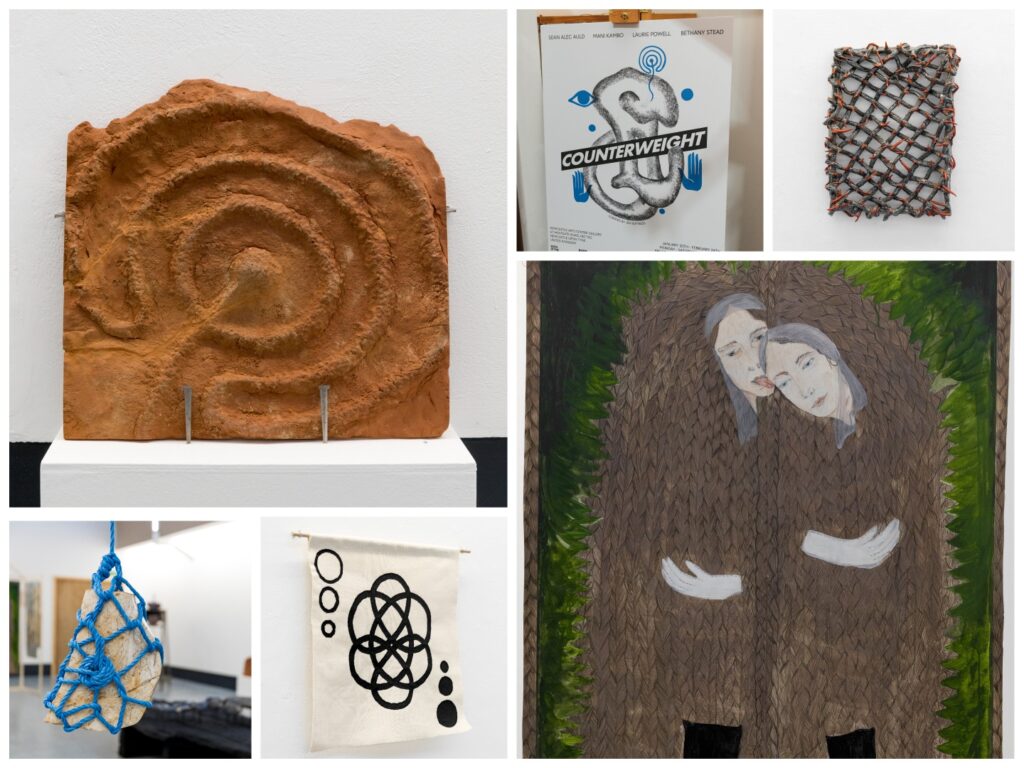
“I went to a Catholic school and although I’m not particularly religious it made a massive impression on me in terms of my class identity. To have a good education I had to pretend to be something I wasn’t.
“A lot of my work explores class and being from a working class background which is under-represented in the fine arts.”
Bethany’s most conspicuous exhibit can be seen as one piece or several, she explains, as we stand before it.
“My initial idea was to make a confession box but it’s ended up not being that. But it definitely references a space, a religious space probably and certainly a safe space.”
It’s defined by a frame supporting delicate paintings and drawings done in a variety of media including acrylic, egg tempera and oil pastel.
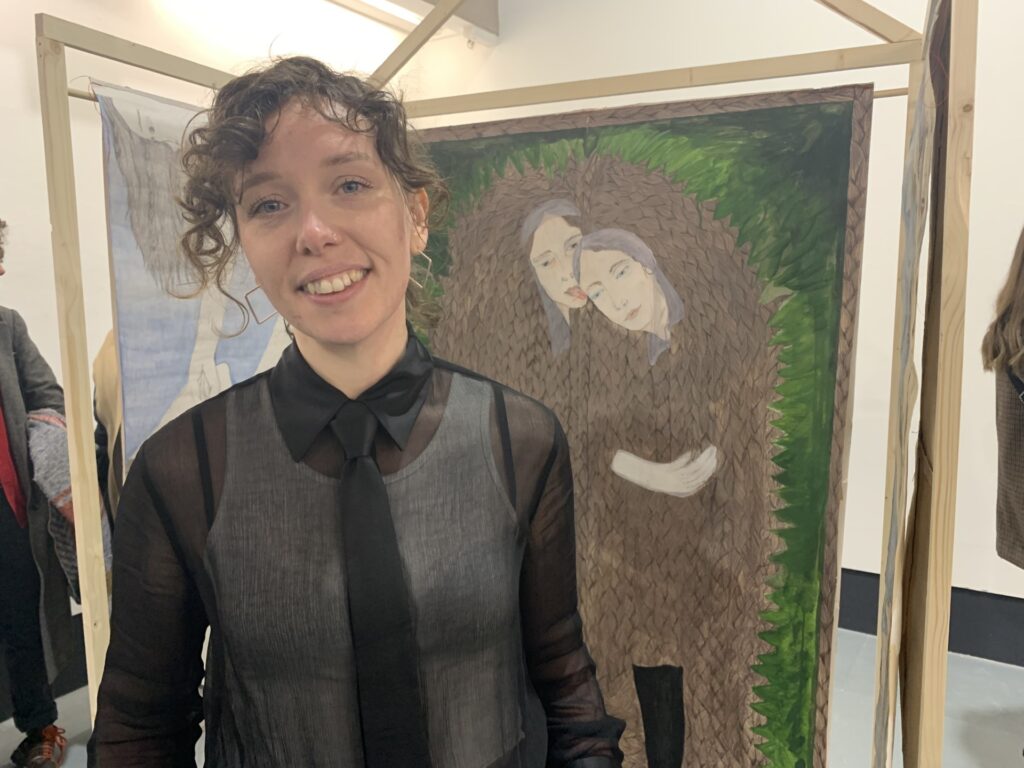
The stories they tell relate to the seven deadly sins but with one missing, she explains — the pride she might feel at seeing her work displayed.
Shame is a word she uses when talking about Catholicism but she need feel none in relation to this imaginative body of work which also includes folkloric ceramic pieces.
“I’d say this is my first professional experience of exhibiting, certainly with a bursary attached,” she says.
“I do a lot of teaching and workshops but I hope to keep having opportunities to exhibit and I hope my work speaks to people.”
Counterweight can be seen at Newcastle Arts Centre, Westgate Road, until February 24. There’s a chance to meet and question the artists on February 23 at 5.30pm.
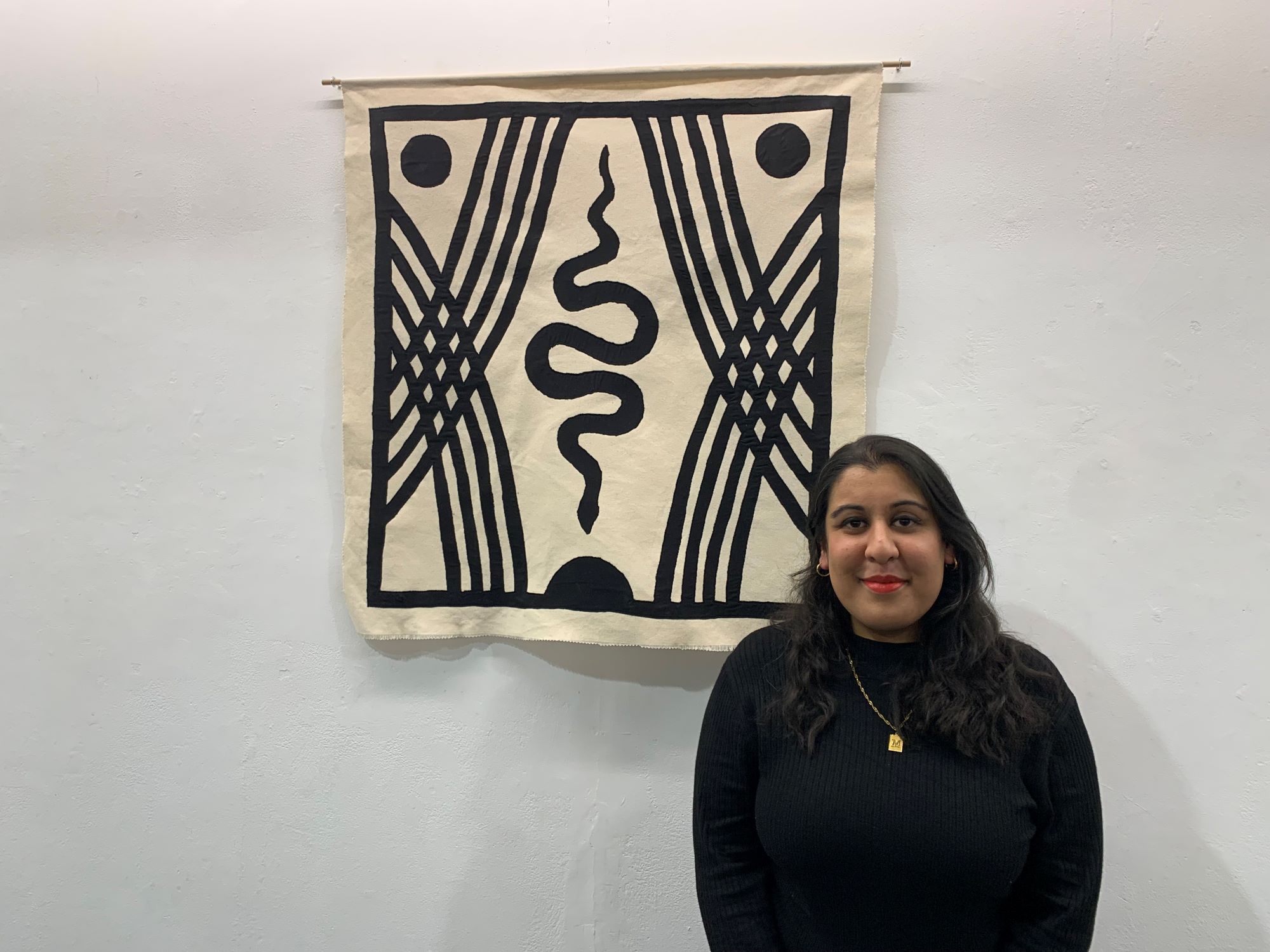
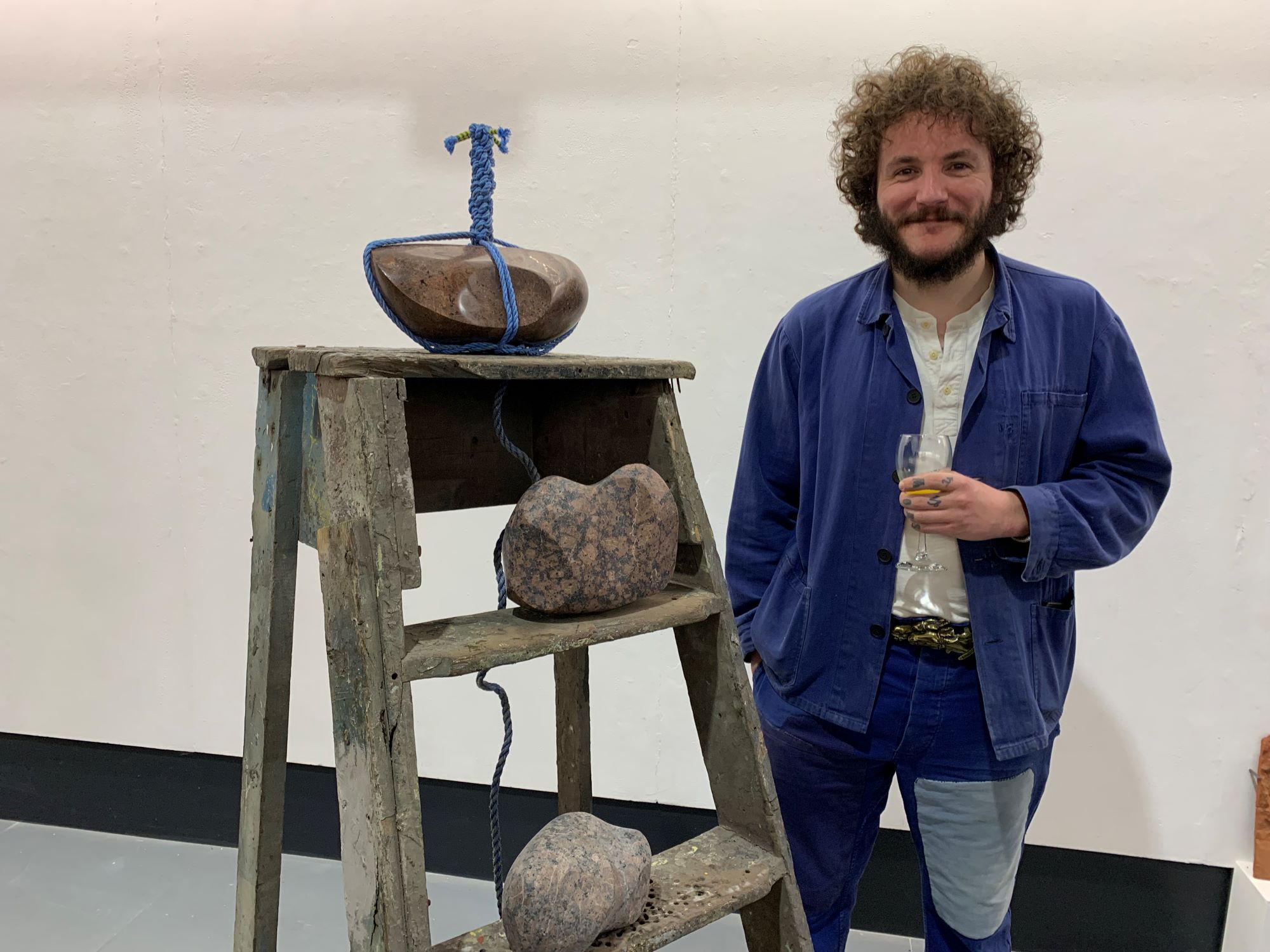
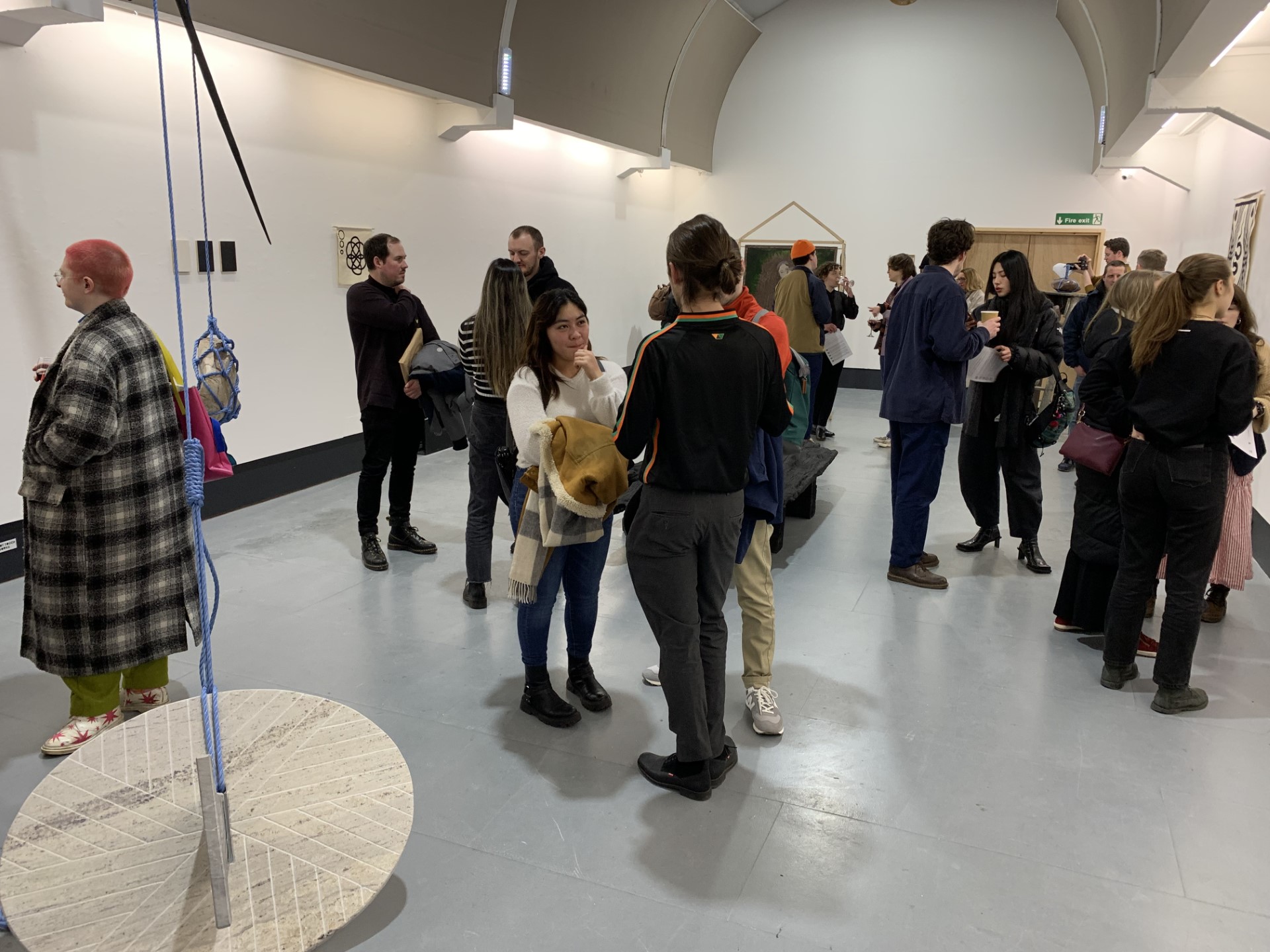
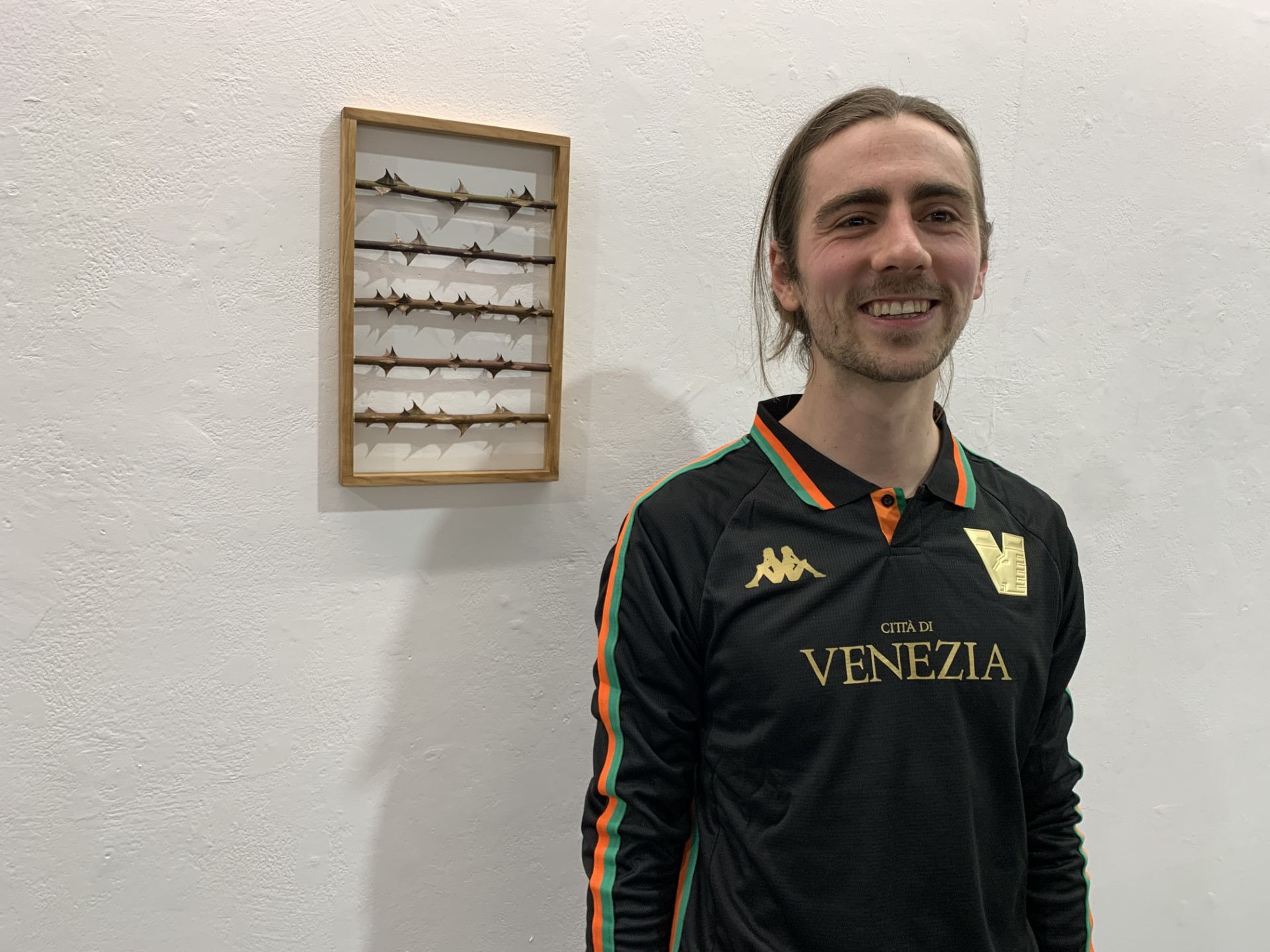
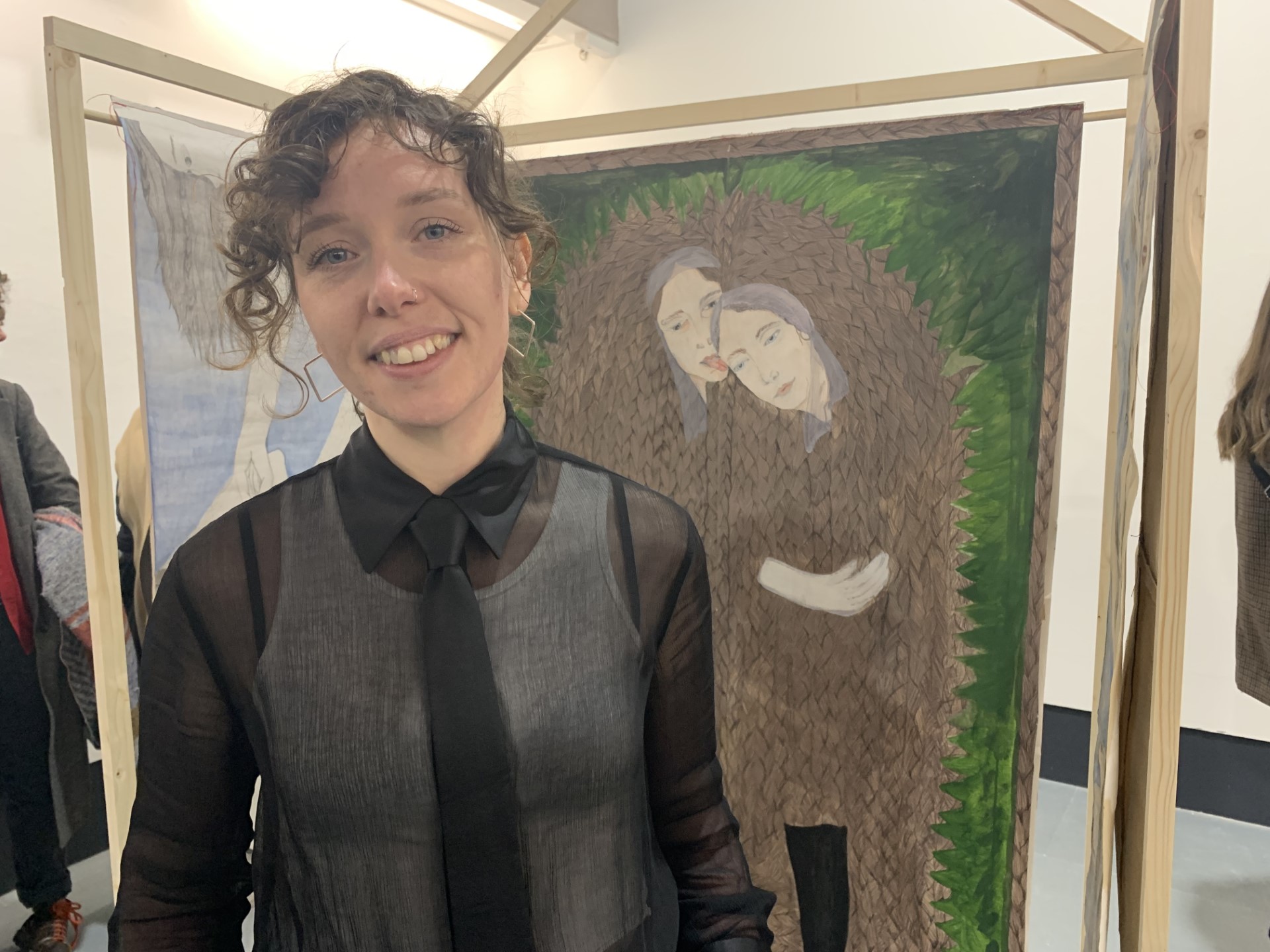
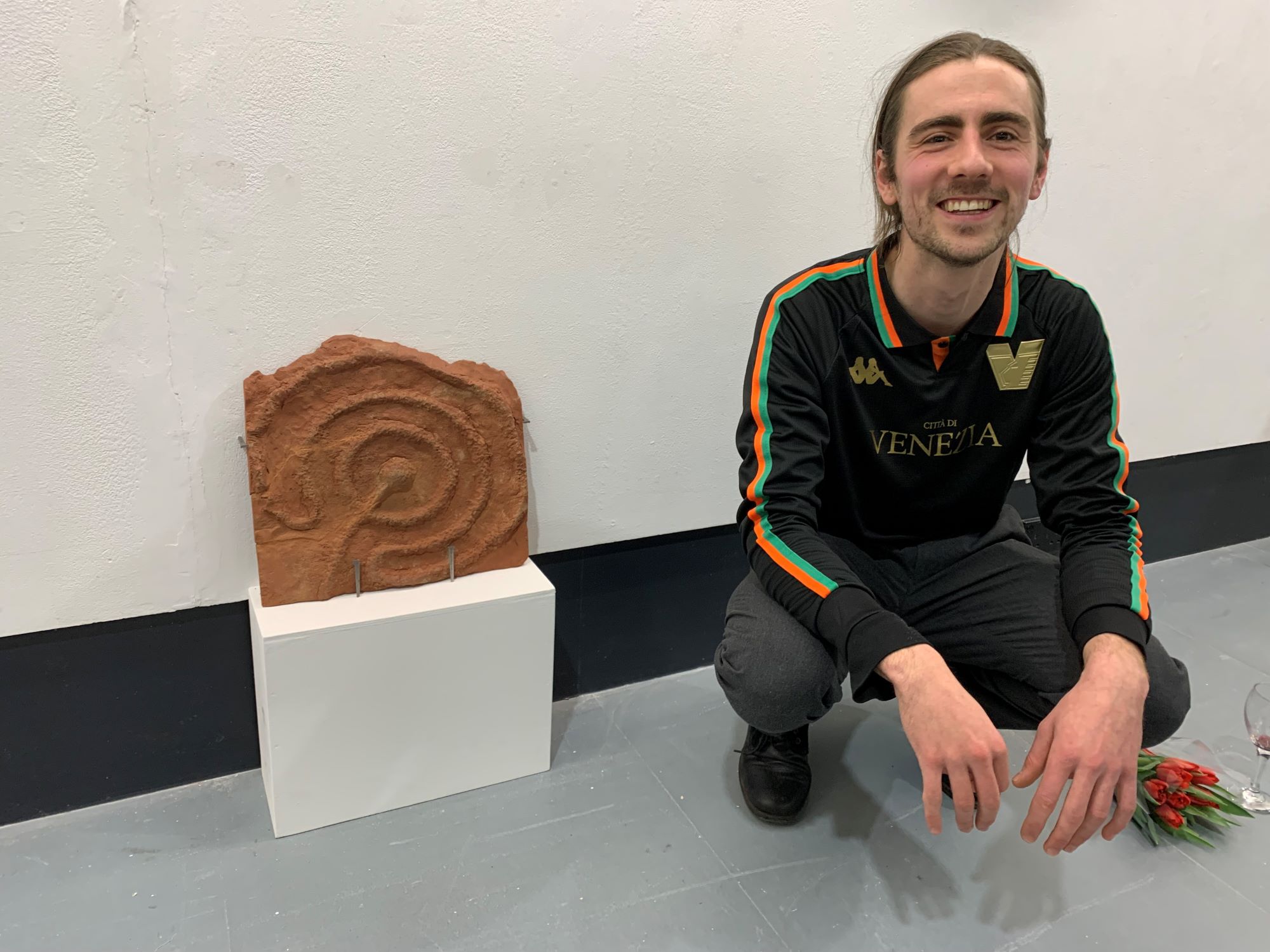
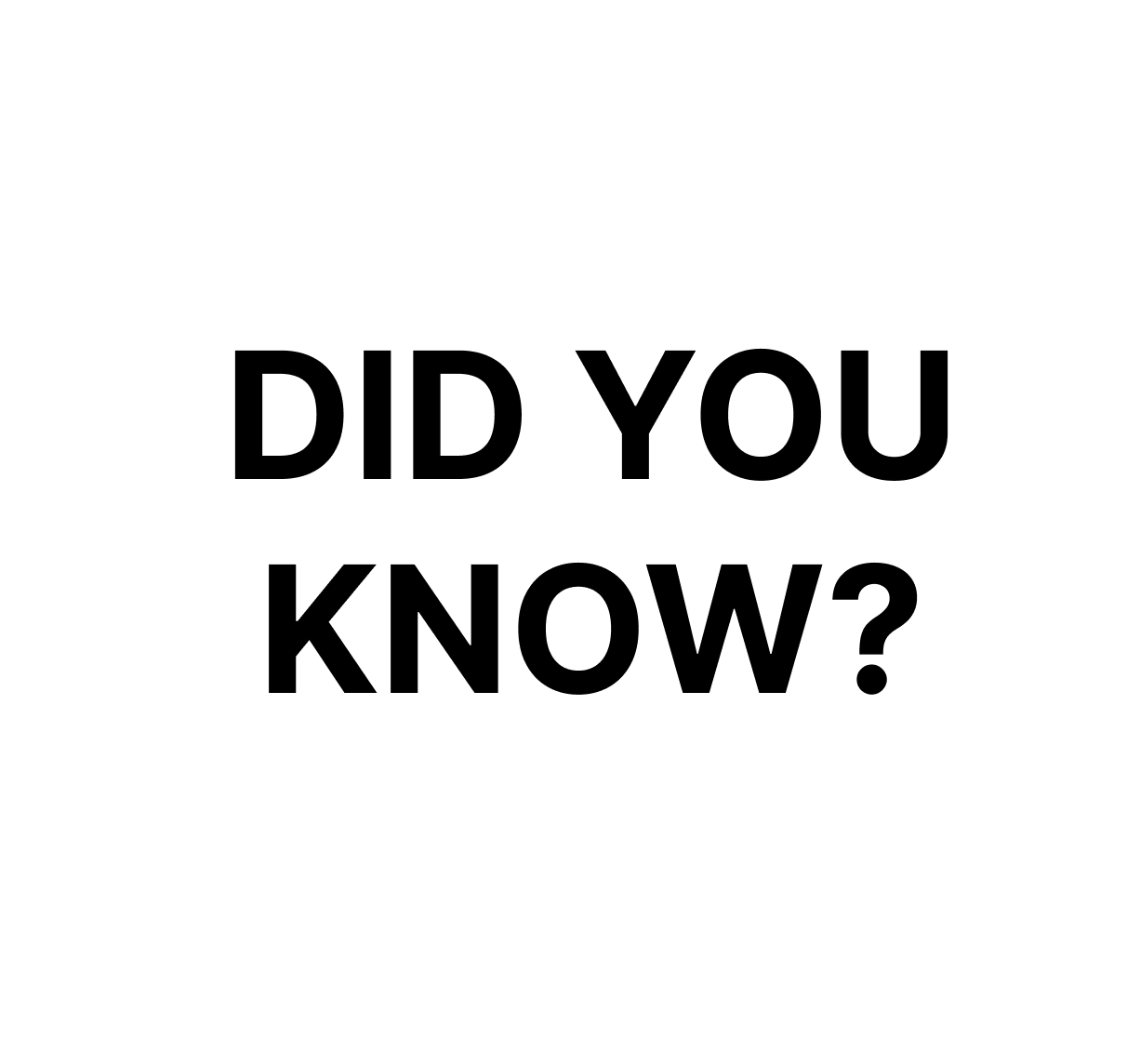
Early on July 17, 2005, 1,700 volunteers stripped naked on Gateshead Quays for a series of photographs by American photographer Spencer Tunick, later exhibited at Baltic



